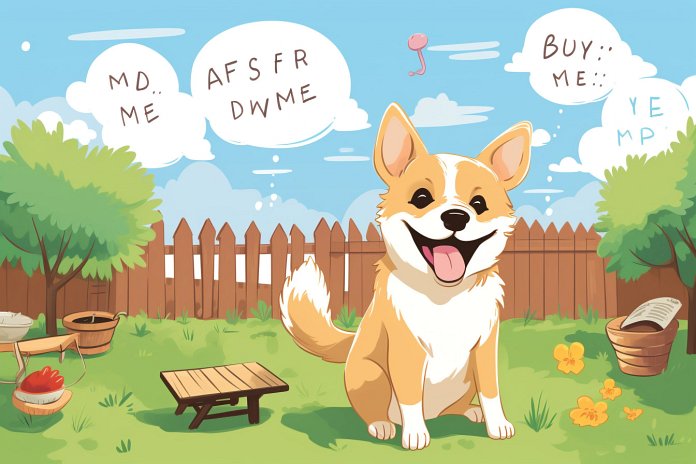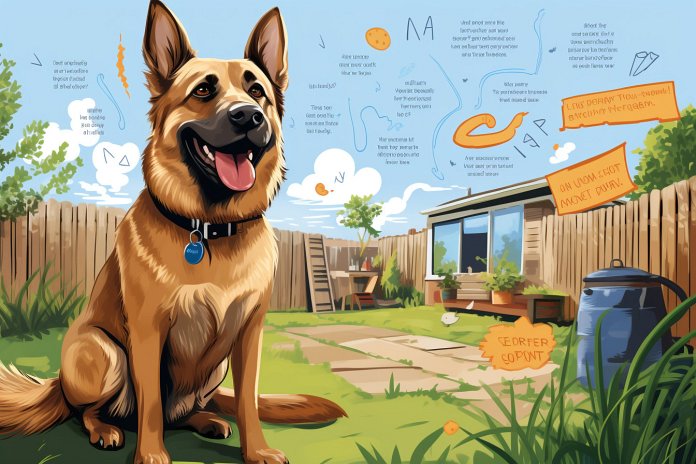
Dr. Doolittle isn’t the only one who can talk to animals. Dog owners also have conversations with their furry friends! While you may think that your dog only understands commands, they are actually as smart as a toddler and can understand a variety of words in their world.
Your dog is listening when you speak
Your dog is listening when you speak and understands the meaning of words you use often. For example, when you talk about dinner, your dog becomes alert and hopeful. They also pick up on your emotions and can interpret your words and intentions based on your mood and tone.
Signs Your Pooch Understands Words
You can tell if your dog is listening by their reactions when they hear your voice. Just like humans, the first sign that your dog is paying attention is when they look at you, lift their ears, or tilt their head. These are all signs that they are taking in the words you are communicating.
Your dog can also associate words with commands if they have been trained to do so. They respond based on the rewards that you have established. Additionally, when you’re simply enjoying your dog’s company and sharing your day, they will pay attention to your words and feelings by coming to you. If you have a working relationship with your dog, for activities like sports or work, they will be attentive to your words and direction.
Certain breeds like Border Collies, Poodles, German Shepherds, Golden Retrievers, and Dobermans are known for their word recognition abilities. However, word responsiveness can vary among dogs based on their unique personalities and socialization opportunities.
Body Language
There are several signs that indicate your dog understands the words you speak, such as being alert, tilting their head, wagging their tail, or dropping their ears. Other signs include gazing into your eyes and coming to you when you call.
How Has the Human-Dog Relationship Evolved to Use Language?
The exact origins of the human-dog relationship are not fully known. However, theories suggest that ancient humans and wolves discovered each other while hunting for big game. They began living together and evolved their relationship to communicate and work together. Another theory suggests that humans raised wolf pups to assist them in hunting. Studies have shown that puppies react more to the human voice than adult dogs, hinting at a biological responsiveness from early interactions.
Through daily interactions, humans and dogs reinforce words with praise, food, and attention. Dogs learn that the words they hear are signals for positive things when they respond appropriately. The bond between humans and dogs has also evolved to a biochemical level, where both species release oxytocin, the “love” hormone, when they look into each other’s eyes. This bond, combined with the association of words with positive emotions, enables dogs to understand words and even emotions.
The Science Behind Dogs Understanding Words
Famous Border Collies like Chaser and Rico have demonstrated incredible vocabulary skills, equivalent to those of a three-year-old child. They can recognize the names of objects and process language through a phenomenon called “fast mapping.” Other studies have shown that dogs comprehend both the tone and meaning of words, similar to how humans process language.
Training Your Dog to Understand Words
Like with people, dogs learn words through positive interactions, routines, and experiences. You can model the meaning of words and use positive reinforcement to build your dog’s vocabulary. Keep training sessions fun and playful, and remember to be patient with your puppy. Start by teaching action words like “Sit,” “Stay,” “Heel,” and “Come” before moving on to object names. Practice and repetition are key to building your dog’s understanding of words.
Conclusion
Dogs are capable of understanding a wide range of words and can even pick up on our emotions. By observing their reactions and body language, you can tell if your dog is listening and comprehending your words. The human-dog relationship has evolved to include language, and dogs can understand words through positive reinforcement and their innate ability to process language. With patience and practice, you can train your dog to understand and respond to a variety of words and commands.
“Words have the power to bridge the communication gap between humans and our canine companions.”

Tips & Things to Know
1️⃣ Pay attention to your dog’s reactions: Observe your dog’s body language, such as tilting their head or wagging their tail, to determine if they are listening and understanding your words. These signs indicate that your dog is paying attention to you and taking in the information you are communicating.
2️⃣ Understand the power of words and emotions: Dogs not only understand the meaning of words but also pick up on your emotions and tone of voice. Be aware that your dog can interpret your words and intentions based on your mood and tone. Use positive interactions, routines, and experiences to build your dog’s vocabulary and reinforce their understanding of your words.
3️⃣ Start with basic commands and progress gradually: When training your dog to understand words, start with simple commands like “sit,” “stay,” “heel,” and “come.” Use repetition and positive reinforcement to help them learn these action words before moving on to teaching them the names of objects and things. Remember to keep training sessions short and playful, and be attentive to your dog’s energy levels.
Frequently Asked Questions, Answered ✅
1. How can you tell if your dog is listening to you?
– You can tell if your dog is listening to you by observing their reactions, such as looking at you, lifting their ears, or tilting their head.
2. Which dog breeds are known for their word recognition abilities?
– Border Collies, Poodles, German Shepherds, Golden Retrievers, and Dobermans are known for their word recognition abilities.
3. How did the human-dog relationship evolve to use language?
– There are theories that suggest humans and wolves began living and hunting together, eventually evolving a bond that allowed for communication and cooperation. Another theory suggests that humans raised wolf pups to assist them in hunting.
4. What is the science behind dogs understanding words?
– Studies have shown that dogs can comprehend language and assign meaning to words. Dogs process both the tone and emotion of words, similar to humans, and different parts of their brain are activated when they hear praise words.
5. What steps can you take to train your dog to understand words?
– Keep it simple and reinforce your dog’s learning. Make training time fun and playful, avoid being harsh, and be attuned to your dog’s energy levels. Start with action words like “sit” and “stay” before moving on to teaching names of objects. Practice and repetition are key, and provide opportunities for your dog to apply their learning in different situations.